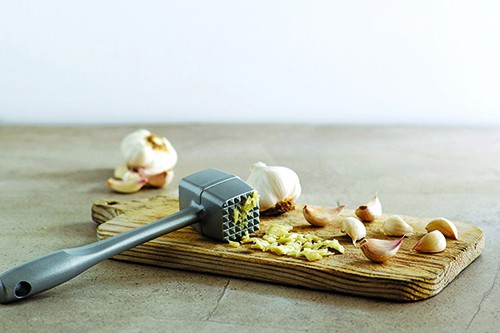
Meat mallets and pounders not only can tenderize healthier, less fatty yet tougher cuts of meat, but also are a great stress reliever. What’s more therapeutic after a long, busy day than pouring a glass of wine and pounding out your aggressions with a mallet?
Home cooks may be most familiar with a traditional meat mallet, aka “meat tenderizer,” which looks similar to a hammer and often is spiked, “toothed” or textured to cut through muscle fibers and tenderize tougher cuts of meat, such as flank steak, wild game and grass-fed beef.
The term “meat pounder” often is used interchangeably with “meat mallet,” but a pounder usually has a shorter handle than a tenderizer, a circular head and a smooth surface — similar to a hockey puck on a stick. If you want a thin piece of chicken, a meat pounder is your preferred tool because it won’t tear the chicken like a tenderizer might.
Wooden meat mallets and tenderizers may be the least expensive option, but they are not as strong as metal versions, cannot be cleaned in a dishwasher and need regular oiling with a food grade oil to prevent splintering. In comparison, metal mallets and tenderizers made of stainless steel, aluminum or chrome are more heavy duty and require less muscle power to pound meat. Most metal versions also can be washed in a dishwasher and don’t require any special care.
However, metal meat tenderizers are heavier than wood versions and may damage cutting boards. Expect to pay anywhere from $7 for a wooden mallet to $20 or more for a metal version.
All meat pounders are made of metal although many have non-metal handles, which helps lessen slipping and provides a more comfortable grip. Meat pounders usually are more expensive than meat mallets and tenderizers; expect to pay about $30 for a high-quality meat pounder with a two-sided disk head that is smooth on one side and textured on the other.
To properly use a meat mallet, tenderizer or pounder, place meat or poultry between two pieces of plastic wrap or wax paper to keep it from sticking to your cutting board and strike the meat evenly to achieve uniform thickness. Thoroughly wash and sanitize equipment in the dishwasher or by hand to prevent cross-contamination and foodborne illness.
Not a meat eater? You may still find a meat mallet or pounder to be an indispensable kitchen tool. Consider these other uses: garlic crusher, nut cracker, fresh ginger mincer, whole spice and peppercorn “grinder,” olive pitter, ice crusher, plantain flattener and more. Try making “smashed potatoes” by flattening whole, boiled new potatoes, sauteing them in olive oil and seasoning with salt, pepper and fresh herbs for a delicious side dish.


